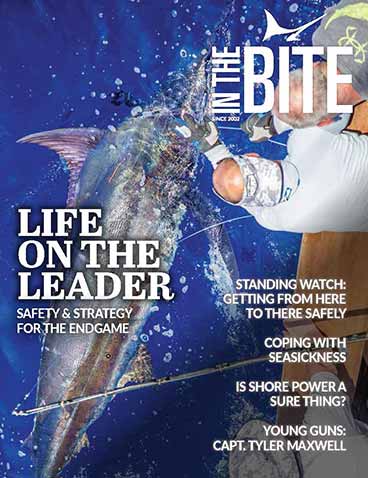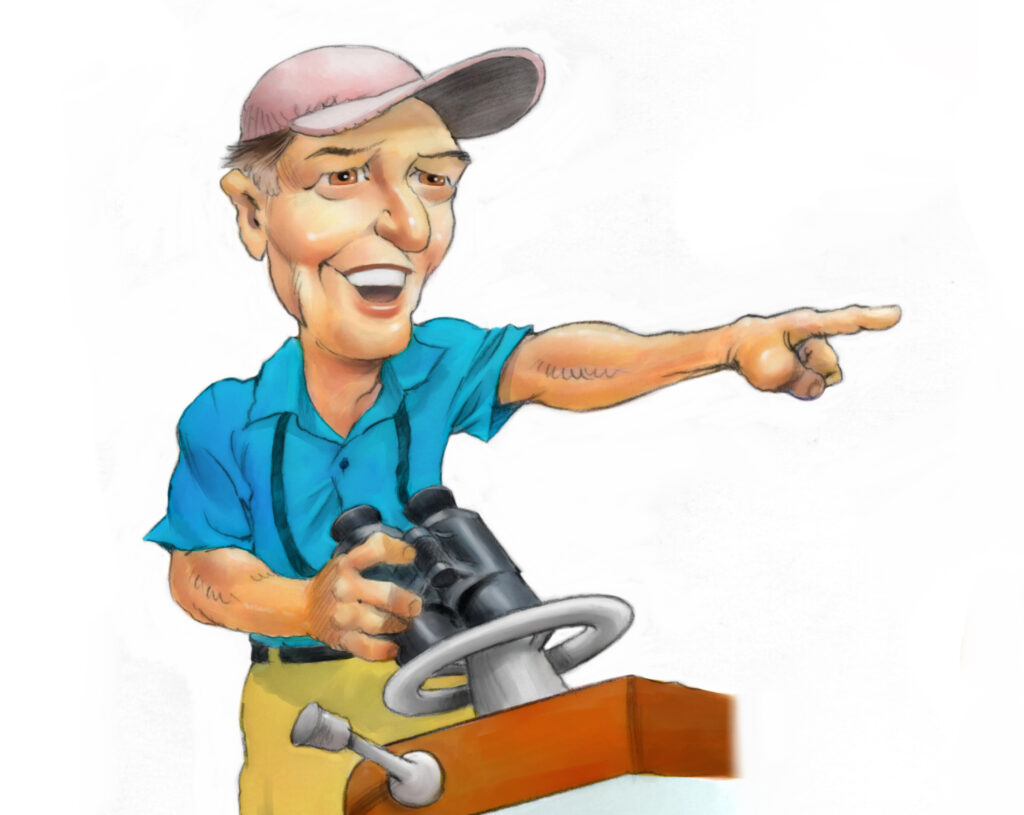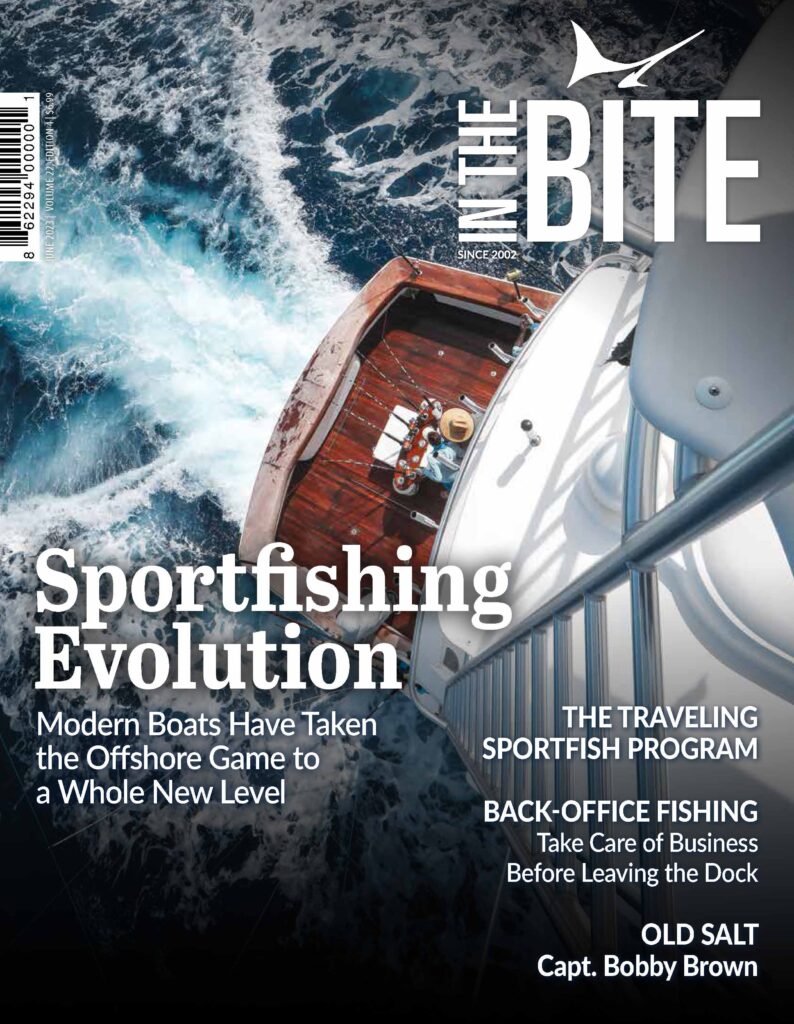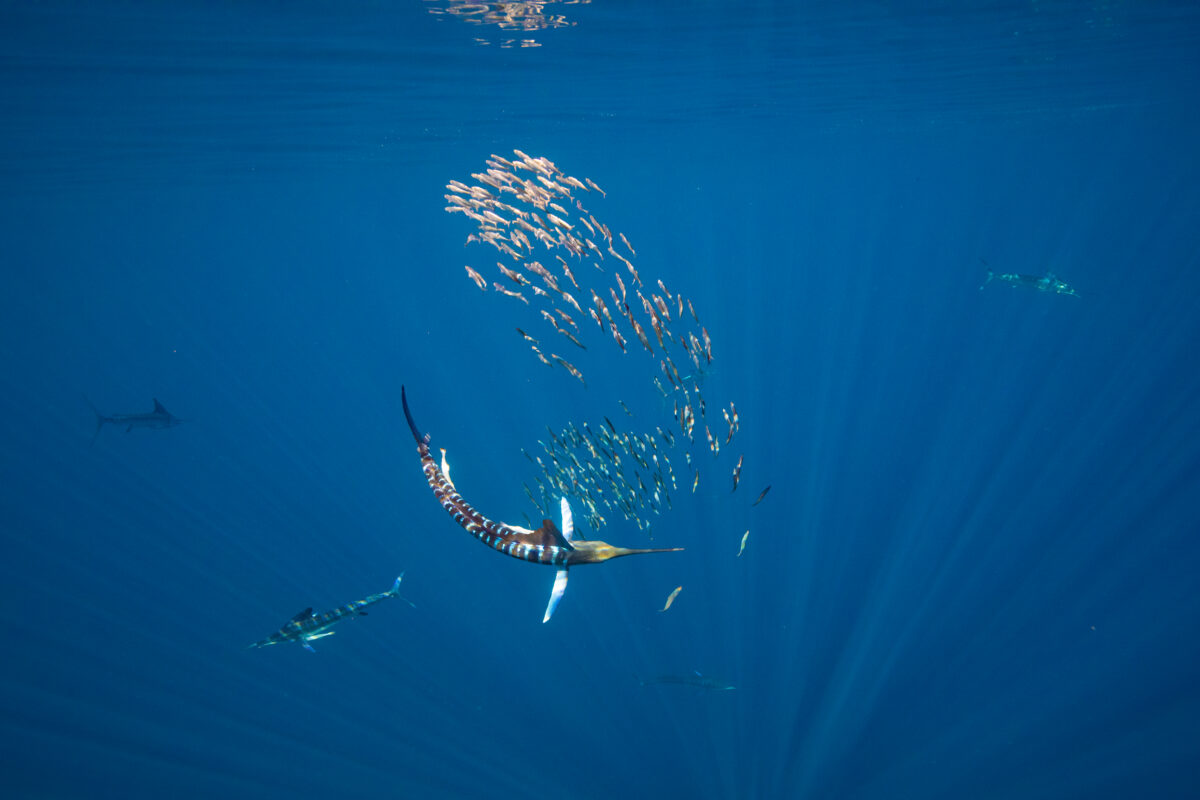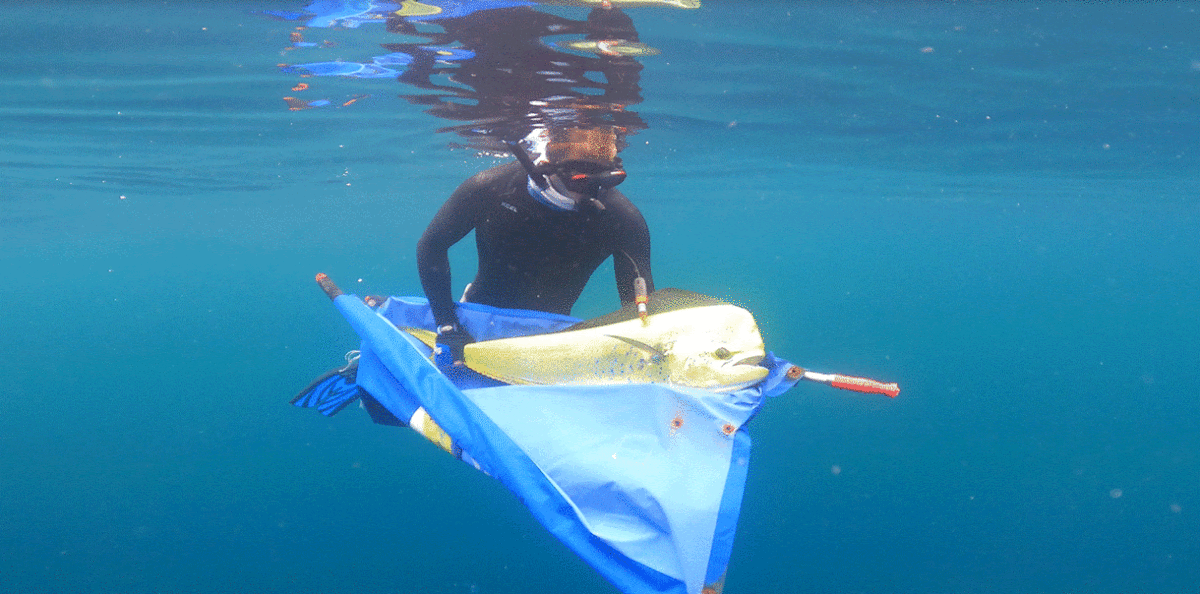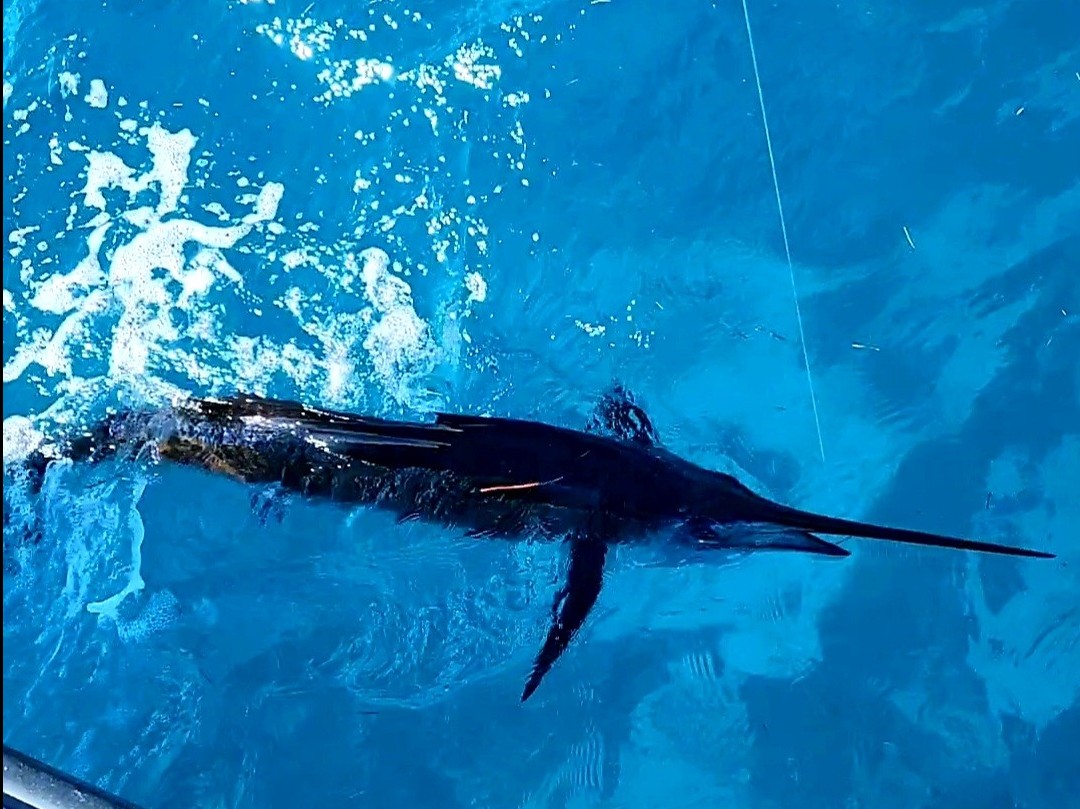Table of Contents
Few things in life have the power to rile emotions and stir passions as do changes in fisheries laws. From quinoa-eating whale huggers to the Copenhagen-chewingest of greenstick captains, livelihoods are at stake on both sides and everyone has an opinion. Buoy gear provides a perfect example. The pioneers of the gear were called loophole longliners. Some environmentalists now hail the fishery as the ultimate in sustainability. This is its story.
Introduced by a hybrid waterman (one who makes his living on both sides of the sportfishing/commercial fishing divide), buoy gear has been both vilified and exalted. Whereas most gear types or fishing activities are hated by one side or the other, buoy gear has been, at one time or another, hated by most everyone. Longliners believed that buoy gear fishermen were unfairly allowed to fish in closed areas.
Recreational fishermen believed that buoy gear exploited gaps in regulation to take advantage of areas closed to commercial fishing. As interesting as the back end of the story may be, fascinatingly many of the same forces who originally protested the gear now point to it as a preferred alternative.

Tim Palmer: Captain, Inventor
Tim Palmer is perhaps one of the most interesting people in fishing. Based in Stuart, Florida, Palmer is a mechanic who can fix anything that floats, and a captain who can catch anything that swims. He also owns two giant Galapagos tortoises, named Horace and Quagmire. When you call him on the phone, Tim is as likely to answer from the bridge of a boat he delivering, which can be anything from an 80-Spencer to a six knot longliner (really). The International Commission on the Conservation of Atlantic Tunas (ICCAT) credits Tim with inventing buoy gear.
I started buoy gear fishing in 2003. I used to rod and reel fish for swordfish a lot. I had a hand gear permit to sell fish. I’d also been experienced in long line boats since I was 12-years old. I had an idea of how longlines worked and how effective they could be under certain circumstances, Palmer describes. The Florida Straits were closed to longline fishing in 2001, due in part to high rates of bycatch of billfish, sea turtles, marine mammals and juvenile swordfish.
I was looking for a way to increase catch and be profitable. With rods and reels I was averaging between one and two fish per night, Tim recalls. I had an idea for creating a fleet effect with buoys. I looked at the regulations to see what defined a long line. It turns out, a long line was any line with at least three branch lines. I called two agencies and got two different answers about legality. I looked into the Federal code and realized what I was doing was not a longline because it had two hooks or less.

The Birth of Buoy Gear
First I made up a small batch of high flyers because I needed to see the gear at distance. Each high flyer had a buoy and two hooks. The first night, I put these out and normal rod and reel spread with the same baits, Tim recalls. As soon as I set my last rod and reel, I could clearly see that the first buoy was hooked up”it was being dragged. I was so excited that I reeled in everything and went after it. It was a keeper sword in the first 20-minutes of fishing.
That night Palmer went home early he was at capacity. With seven swords on the boat (four caught on buoys), Palmer says, I can be a little thick sometimes, but I knew I was onto something.
This technique was effective. I needed to make two things: more set-ups and a bigger fish box, Tim says of the first night. Above all, I knew I needed to let NMFS (the National Marine Fisheries Service pronounced nymphs) know what I was doing. There was nobody else doing anything like it. I needed to get it defined and get it authorized. I kept everything very, very below wraps. I was very cautious about who I told. I knew the firestorm would start when people saw how many fish I was catching. All the while, I was communicating with NMFS.

Getting Authorization
I described the gear to NMFS in detail and was regularly sending catch logs. As word got out about what was happening, they characterized the gear and created a definition. NMFS was greatly interested in the gear because it produced practically no by catch, Palmer recalls. They were especially concerned about sea turtles. The pelagic longline industry at the time was switching to circle hooks to mitigate turtle catch. And because the gear is fished at night, there was also no billfish bycatch.
NMFS was happy with buoy gear for two reasons. First was the bycatch issue. Secondly, the gear allowed access to an area (the Florida Straits) with high catch per unit effort that didnt involve longlines. In 2006 NMFS defined and authorized the gear and importantly stated that only directed swordfish permit holders could use the gear.
The current NMFS definition of buoy gear reads:
Buoy gear one or more floatation devices supporting a single mainline to which no more than two hooks or gangions are attached. This gear may be free-floating and is not required to be attached to, or in contact with, a vessel; however, it must be released and retrieved by hand. Vessels utilizing buoy gear are limited to possessing or deploying no more than 35 flotation devices. Fishermen must mark each flotation device (high flyer and buoy) with (1) the vessel name, and (2) the vessel registration number, USCG documentation number, or HMS permit number. Monitoring equipment such as radar reflectors, beeper devices, lights, or reflective tape must be attached. If only reflective tape is used, the vessel deploying buoy gear must possess on board an operable spotlight capable of illuminating the deployed gear. Individual buoy gears must not be attached to one another.
Buoy Gear from a Fisheries Management Perspective
Speaking on the condition of anonymity, a government scientist who is involved in commercial fishing monitoring gave his perspective on buoy gear. No normal scientist, our anonymous fisheries manager is also a capable, experienced recreational fisherman. Buoy gear works pretty well in Southeast Florida because of the strong current. You need current to cover lots of ground. Because it is tended gear, you can remove bycatch and undersized swordfish before it dies. As the gear is tended, you can modify the baits frequently. Each hook, therefore, is more effectively fished, he describes.
The swordfish fishery in Southeast Florida is also relatively close to shore. This is good because most trips are day trips, which cuts down on expenses. Catching fresh, more profitable fish with less bycatch is something that management tries to integrate and get better at doing. Small scale, local alternatives to imported highly migratory species provide a great way to support sustainable fisheries, he says, scientifically.
Estimates of actively fishing buoy gear permits in Southeast Florida run less than 100 (many of the original buoy gear fishermen switched to deep dropping in the day time). Buoy gear is generally an extra, supplemental fishery for permit holders. They are generally charter/ buoy gear fishermen or live bait/ buoy gear, some are commercial kingfish fishermen who buoy gear for swordfish. The gear has minimal environmental impact and supports fisheries diversification, these are all good things, the manager states. More and more there are market forces that reward sustainability with increased profit. This is a great way for consumers to support local, sustainably-harvested fish.

Conservation Benefits of Buoy Gear?
To the untrained eye, the statement above may seem counter intuitive. The conservation benefits from buoy gear result from the ability to selectively target swordfish without killing nontarget fish or other sea creatures. When compared to buoy gear, longlines, drift gillnets and other larger, less selective forms of commercial harvest have a much higher rate of interaction with species other than those targeted.
Dr. David Kerstetter, an assistant professor at Nova Southeastern University, is the marine biologist with perhaps the most experience studying buoy gear. I was first involved with buoy gear in 2008 as part of my post doc at the Southeast Regional Fisheries Office of NMFS. At the time, there were several former longliners experimenting with buoy gear. I wrote a project which was funded by NOAA to study hook rates and other variables of the gear, Kerstetter recalls. A lot of the stuff you hear from a conservation perspective about buoy gear is true. In terms of conservation, it is a wonderful way to harvest swordfish while minimizing marine mammal and sea turtle bycatch.
This observation, and its benefits, has not gone unnoticed. Some governmental organizations have hired me to teach buoy gear as an alternative to offshore drift gillnets. Ive been to Turkey, fishing in Mediterranean Sea, Reunion Island in the Indian Ocean and off the coast of Kenya. It worked best in Kenya, the fishery is similar to Florida in its currents. There are now guys successfully buoy gear fishing in Kenya that I taught, Tim Palmer says.
Dr. David Kerstetter was also involved in the international projects. We were in involved in taking buoy gear abroad to minimize bycatch issues. In Turkey, we did successfully catch a swordfish using the gear. In Reunion Island, there was a high level of interest, he says. In general, it probably takes about a year to fine tune the gear in a new location to commercially produce.
Buoy gear works best where there is a short distance between shore and the fishery. Having a short time between harvest and sale of the fish produces the highest quality and results in the best vessel revenue. In South Florida, if you wanted to, you could catch the fish and have to market within four hours if you really wanted to, Kerstetter explains. You could have the same scenario in some of the northeast canyons and maybe in Hawaii.
The Greatest Lesson of Buoy Gear
Perhaps more than anything else, buoy gear is a lesson in innovation. By modifying the presentation of bait and adapting to the rules, the early practitioners of buoy gear created an efficient method of targeting swordfish that excluded bycatch to a large degree. There is still room to innovate and to create. There are guys trying buoy gear in the Northeast and in the Gulf. Some are trying buoy gear for tuna. The approach to creating other, better and smarter ways to harvest highly migratory species is important. Take Tim example here and run with it. Innovating better, more responsible methods of harvesting fish is what it all about, says the government scientist. He may be onto something.

Tim Palmer Typical Buoy Gear Spread
I generally run 11-13 set ups. A set up consists of a small high flyer with reflective tape and lights. It includes the vessel number. I then clip an A2 poly ball and seven-inch bullet buoy to the high flyer, Palmer details. Beneath the high flyer is the terminal tackle. The length varies by moon phase, but they generally include a 300-pound leader that is between 200-300-feet. I place a battery-operated swordfish light about 50-feet from the bait. I then place a light stick about 15-feet from the bait. The hooks I use are Eagle Claw 9016, 7/0-9/0, he says.
For bait, Palmer deploys a simple pin rig for squid. Some are natural, others he dyes red or green. He also uses mackerel or other fish, either backward or pin rigged.
Don’t Forget to Check Out Our Sportfishing Job Board! Did You Know? It’s the perfect platform for seeking skilled captains and mates. Whether you’re on the hunt for your dream team or looking to join one, your next big adventure begins here. Explore the opportunities now! Click Here
Dive Deeper into the World of Sportfishing
You’ve just experienced a taste of the exceptional content featured in the pages of InTheBite Sportfishing Magazine. If you found this engaging, you’re in for a treat with our full publication. Whether you prefer the tactile experience of print or the convenience of digital or both we have a special offer for you.
Unlock Exclusive Savings: Enjoy 50% Off Your Subscription!
Are you ready to explore the thrilling world of sportfishing from the comfort of your home? Subscribe now and embark on a journey filled with captivating stories, expert insights, and insider tips. Choose between our digital or print edition and secure an incredible 50% discount on your subscription.
Subscribe today and get ready for an adventure like no other. Click here to subscribe and elevate your sportfishing experience with InTheBite Sportfishing Magazine.

